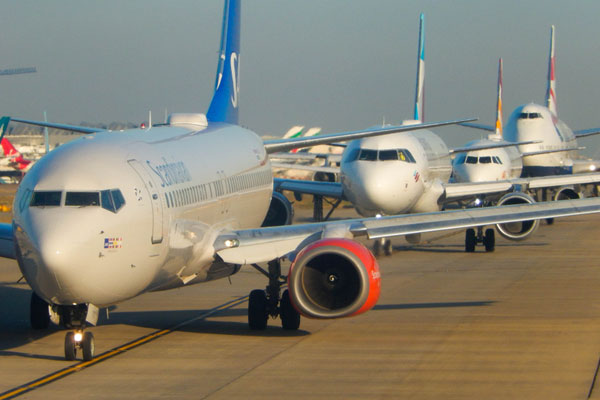Airline passengers should brace for continued high fares due to ongoing constraints in capacity. Delayed aircraft deliveries and engine issues are compounding the situation.
A leading aviation consultancy, JLS Consulting, warns that these factors will force airlines to maintain elevated prices as network planning becomes increasingly uncertain.
Challenges in Aircraft Deliveries and Maintenance
The aviation industry is grappling with significant challenges, including delays in aircraft deliveries that disrupt flight schedules. These delays are not merely inconvenient; they contribute to a domino effect of logistical issues, affecting airlines’ ability to meet demand.
According to John Strickland from JLS Consulting, airlines are forced to reschedule flights due to late deliveries or cancellations, putting upward pressure on fares. This situation also impacts airlines’ profitability since undelivered aircraft represent unused capital investments.
Impact of Engine and Safety Issues
Complicating matters further, maintenance problems with Pratt & Whitney engines on Airbus A321neos are grounding 350 aircraft yearly. These disruptions stretch across 2024, 2025, and 2026, with each aircraft grounded for substantial periods due to engine failures and required regulatory compliance.
Meanwhile, Boeing faces scrutiny over safety standards after an incident involving a 737 Max-9. The resultant delays mean that airlines like Ryanair are unable to deploy their planned new fleet, forcing route reductions and diminished profit forecasts.
Economic and Geopolitical Factors
Political tensions globally, such as Russia’s actions in Ukraine and the Middle East conflict, have further strained the airline sector. These conflicts have resulted in longer flight routes and increased fuel costs, escalating operational expenses.
Airlines are not just grappling with operational challenges; the geopolitical climate adds an unpredictable layer that threatens revenue stability. These numerous pressures ensure that airlines are keen to pass increased costs onto customers via higher fare structures.
Case Study: Ryanair and Wizz Air
Ryanair’s operation has suffered due to Boeing’s delivery delays, affecting 20 out of 50 planned aircraft additions. This scenario underscores the broader industry trend of constrained capacity leading to strategic reductions.
John Strickland points out that Wizz Air faces more severe challenges, with 40 new Airbus planes grounded due to engine problems. This predicament forces Wizz Air to reconsider its flight operations significantly.
Demand and Pricing Landscape
Despite constraints, air travel demand is resilient, with airlines experiencing high load factors and robust pricing. This trend is particularly observable in markets like the North Atlantic and European holiday sectors.
While airline profits have rebounded admirably post-pandemic, it is largely attributable to high demand and aggressive pricing tactics. Profits are sustained not merely by volume but by leveraging the pricing environment to counteract operational disruptions.
Strickland has emphasized the astonishing recovery, pointing out the strong financial performance amidst restrictions as an industry anomaly. He highlighted the robustness of airlines managing to operate with extensive capacity issues yet still yielding profit.
Future Outlook and Strategic Adjustments
The outlook for the airline industry suggests continued volatility, with strategic adjustments being inevitable. Airlines are expected to focus on efficiency gains and operational resilience to navigate the uncertain landscape.
There is a pressing need for strategic foresight in managing fleet and network planning, ensuring that airlines can adapt to ongoing supply chain disruptions and geopolitical shifts. Proactive measures are required to maintain profitability amidst these challenges.
Conclusion
While the airline sector navigates through these turbulent times, passengers should prepare for sustained high fares. Market dynamics, influenced by both supply chain issues and external factors, are unlikely to change soon.
In conclusion, the persistence of high airfares reflects a complex interplay of operational hurdles and external pressures. Airlines must strategically adapt to maintain service levels and financial health.

